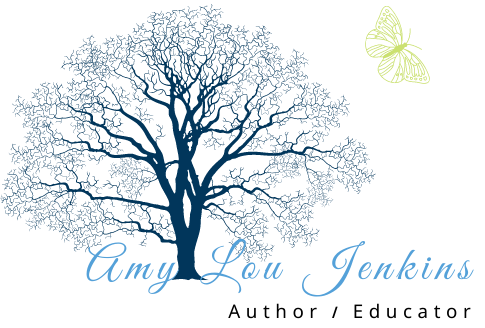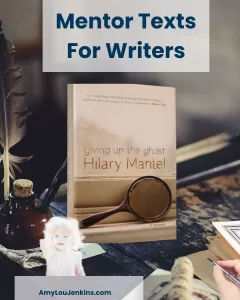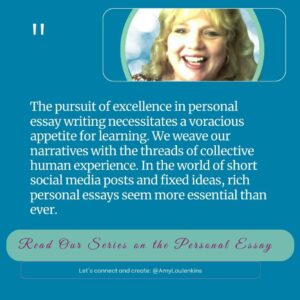Welcome back to our series on crafting a publishable personal essay. Now that you’ve read classic essays and chosen a subject that speaks to you, it’s time to dive into the writing process. In this post, we’ll explore how to create an opening that grabs your reader’s attention and creates a contract with the reader. This contract establishes who will be the narrator (Is it you the professor, the daughter, the parent, the friend, or…?), the topic to be explored, and the tone and voice the reader expects . Additionally, the beginning of your personal essay must convince the reader to keep reading.
Write about your subject by prewriting. Write until you find your thesis, your main point. Then structure and write your first draft.
Start with a Hook
The opening sentence of your essay should be a hook—an intriguing statement that entices readers to keep reading. A hook can take various forms:
- Anecdote: Share a short, engaging anecdote related to your essay’s subject. For example, if you’re writing about conquering a fear of heights, start with a gripping description of standing at the edge of a cliff.
- Question: Pose a thought-provoking question that piques readers’ curiosity. If your essay is about embracing change, start with a question like, “Have you ever wondered what life would be like if you said ‘yes’ to every opportunity?”
- Contradiction: Present a contradiction or unexpected statement that challenges common assumptions. For instance, if you’re writing about self-discovery, you could start with, “I thought I knew who I was until I realized I’d been living someone else’s life.”
- A startling statement: Neat people are selfish. My sister was my mother. Without football, life has little meaning. These statements may have novelty for the reader. They want to know more.
Introduce Your Thesis Statement
After hooking your readers, it’s time to introduce your thesis statement—the core idea or message of your essay. This statement should succinctly express what your essay will explore. Keep it clear and concise.
Real Essay Openings
Let’s look at examples from real essays to see these principles in action:
From “On Keeping a Notebook," by Joan Didion
Hook: That woman Estelle,'" the note reads, "'is partly the reason why George Sharp and I are separated today.' Dirty crepe-de-Chine wrapper, hotel bar, Wilmington RR, 9:45 a.m. August Monday morning." Since the note is in my notebook, it presumably has some meaning to me.
Possible Thesis Statement: The impulse to write things down is a peculiarly compulsive one, inexplicable to those who do not share it, useful only accidentally, only secondarily, in the way that any compulsion tries to justify itself. I suppose that it begins or does not begin in the cradle.
From “Shooting an Elephant” by George Orwell
Hook: “In Moulmein, in Lower Burma, I was hated by large numbers of people—the only time in my life that I have been important enough for this to happen to me.”
Possible Thesis Statement: “All I knew was that I was stuck between my hatred of the empire I served and my rage against the evil-spirited little beasts who tried to make my job impossible.”
- Finding Your Voice
Your opening sets the tone for the entire essay, so ensure it reflects your unique voice and style. Whether it’s humor, contemplation, or vulnerability, let your personality shine through. Readers connect with authenticity.
With a captivating opening in place, your readers will be hooked from the very start. In our next post, we’ll delve into the art of creating a satisfying ending that leaves a lasting impression.

















